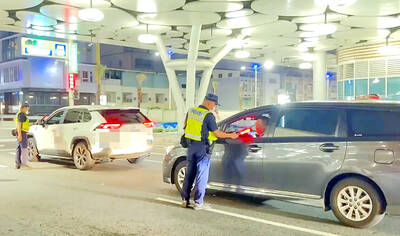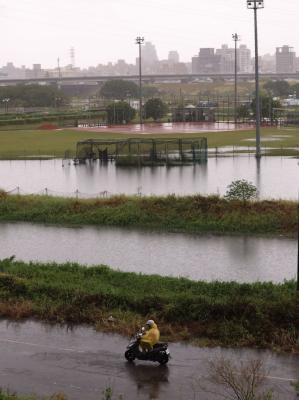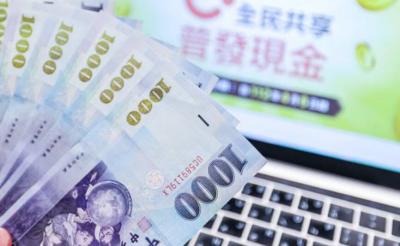A full-scale version of the Hankuang No. 19 exercise will be held late next month in Ilan, after the original exercise in May was scaled down because of the SARS outbreak, defense sources said yesterday.
Hankuang will be the largest military exercise held this year and will involve all the best weapon systems of the armed services.
It is the first time that a Hankuang-series exercise, begun in the early 1980s, will be launched twice a year.
Various kinds of missiles, including the US-made Harpoon and domestically-built Hsiung Feng-II anti-ship missile, will be test-fired during the exercise.
Two decommissioned Yang-class warships will be used as targets for the anti-ship missiles and torpedoes fired from a submarine.
The exercise will be one of the largest ever held and is estimated to cost hundreds of millions of NT dollars.
The military declined to explain why this year's exercise will be so large.
The answer could lie with the designer of the exercise -- 6th corps commander Lieutenant General Hu Cheng-pu (
His career has given him experience in conducting military exercises, especially large ones.
In the scaled-down version of the Hankuang No. 19 held in mid-May, Hu demonstrated his understanding of what a joint-operations exercise should be.
The Hankuang-series exercises are joint operations in nature, but in practice, few of them have lived up to their expectations.
Past exercises focused on demonstrating the capabilities of major weapon systems of the three services, more like a well-rehearsed play than a realistic drill.
The exercises were therefore ridiculed by several military officials as "military shows" aimed at pleasing the military leadership.
In this year's exercise, the air force and army will cooperate in a drill to rapidly deploy ground troops using parachutes, a defense source said.
Such an operation requires a lot of practice and is prone to glitches. It is a new tactic that the military might put to use in the event of a war in the Taiwan Strait.

TRAFFIC SAFETY RULES: A positive result in a drug test would result in a two-year license suspension for the driver and vehicle, and a fine of up to NT$180,000 The Ministry of Transportation and Communications is to authorize police to conduct roadside saliva tests by the end of the year to deter people from driving while under the influence of narcotics, it said yesterday. The ministry last month unveiled a draft of amended regulations governing traffic safety rules and penalties, which included provisions empowering police to conduct mandatory saliva tests on drivers. While currently rules authorize police to use oral fluid testing kits for signs of drug use, they do not establish penalties for noncompliance or operating procedures for officers to follow, the ministry said. The proposed changes to the regulations require

Taipei, New Taipei City, Keelung and Taoyuan would issue a decision at 8pm on whether to cancel work and school tomorrow due to forecasted heavy rain, Keelung Mayor Hsieh Kuo-liang (謝國樑) said today. Hsieh told reporters that absent some pressing reason, the four northern cities would announce the decision jointly at 8pm. Keelung is expected to receive between 300mm and 490mm of rain in the period from 2pm today through 2pm tomorrow, Central Weather Administration data showed. Keelung City Government regulations stipulate that school and work can be canceled if rain totals in mountainous or low-elevation areas are forecast to exceed 350mm in

The Executive Yuan yesterday announced that registration for a one-time universal NT$10,000 cash handout to help people in Taiwan survive US tariffs and inflation would start on Nov. 5, with payouts available as early as Nov. 12. Who is eligible for the handout? Registered Taiwanese nationals are eligible, including those born in Taiwan before April 30 next year with a birth certificate. Non-registered nationals with residence permits, foreign permanent residents and foreign spouses of Taiwanese citizens with residence permits also qualify for the handouts. For people who meet the eligibility requirements, but passed away between yesterday and April 30 next year, surviving family members

1.4nm WAFERS: While TSMC is gearing up to expand its overseas production, it would also continue to invest in Taiwan, company chairman and CEO C.C. Wei said Taiwan Semiconductor Manufacturing Co (TSMC) has applied for permission to construct a new plant in the Central Taiwan Science Park (中部科學園區), which it would use for the production of new high-speed wafers, the National Science and Technology Council said yesterday. The council, which supervises three major science parks in Taiwan, confirmed that the Central Taiwan Science Park Bureau had received an application on Friday from TSMC, the world’s largest contract chipmaker, to commence work on the new A14 fab. A14 technology, a 1.4 nanometer (nm) process, is designed to drive artificial intelligence transformation by enabling faster computing and greater power